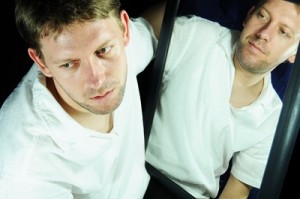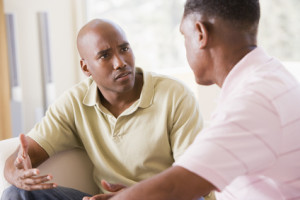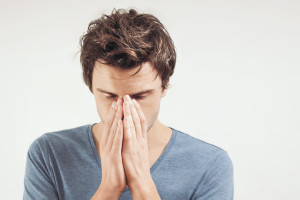- Calls to this hotline are currently being directed to Within Health or Eating Disorder Solutions
- Representatives are standing by 24/7 to help answer your questions
- All calls are confidential and HIPAA compliant
- There is no obligation or cost to call
- Eating Disorder Hope does not receive any commissions or fees dependent upon which provider you select
- Additional treatment providers are located on our directory or samhsa.gov
Gay Sexual Orientation and Males: Is There an Increased Risk for Eating Disorders?
Contributor: Brad Kennington, LMFT, LPC is a therapist in private practice in Austin, Texas. Randall Lopez is currently a graduate student in the Master of Arts Counseling Program at St. Edward’s University in Austin, Texas

Some 6% of the male population is gay; but when you consider that 20% to 42% of eating disordered males are gay, it is easy to see that gay males are disproportionately represented in the eating disordered male population. And over 15% of gay and bisexual men have struggled with full syndrome or subclinical eating disorders, making gay males the highest risk group.
The Findings for Eating Disorders in the Gay Community
Studies also show that gay men have a more difficult time with body image issues than straight males. Consider the following findings:
Exercise:
Gay men exercise primarily to increase physical attractiveness while straight men exercise to increase fitness or health. So, for a gay male his focus is on how his body looks. For a straight male it is more about how his body functions.
The Desire to Be Thin:
Gay men score much higher on the desire to be thin, body dissatisfaction and body image-related anxiety than straight men. For gay men, the pressure is on to get the weight off.
The Idealized Body:

The Importance of Physical Appearance:
Compared to their straight counterparts, gay men place more importance on the physical appearance of both themselves and of potential partners. Not only do gay guys feel like they have to have the “ideal” body, but the expectation is that their prospective boyfriend should have it, too.
Body Dissatisfaction:
Gay men are much more dissatisfied with their bodies compared to straight men and may even be more dissatisfied with their bodies than straight females. Adolescent girls and women are no strangers to society’s pressure to look a certain way. Now gay men have been recruited to play the dangerous game of trying to attain the unattainable–the so-called “perfect” body.
Sexualization of the Gay Male Body
Gay men are exposed to more images of sexualized depictions of men’s bodies than straight men. We all know that sex sells. But it may be an especially effective marketing strategy in the gay community. And gay guys are taking the bait.
The Objectification of the Male Body

Gay men are bombarded with images of the lean and muscular “ideal” and are buying into the message that to be attractive, sexually desirable and worthy of being in a relationship, one must have a slender, youthful look, the six-pack abs and the chiseled torsos seen in the magazines and advertisements.
Studies show that gay males are more vulnerable to media’s influences compared to straight males and are also more likely to accept media’s messages as reality, i.e. models are the accepted standard of how one should look. It is a tall order to fill.
Internalizing the Messages
According to researchers, once these images are internalized and actively pursued, a gay man may be embarking on a precarious path to an eating disorder. In an effort to measure up to the gay community’s “ideal,” some gay men engage in excessive body monitoring, constantly checking, critiquing and evaluating their bodies on how they look. Sexy equals success. The goal is to be some-body, not necessarily some-one.
But what happens if their bodies do not measure up, if they “fail” at meeting the so-called gay “ideal” standard? Studies shows that these guys are likely to experience body shame for falling short, for not having the “right” body. And what follows this perceived “failure” are all of those intensely negative feelings and self-doubts and fear, lots of fear; the fear of rejection, of being alone, of being a no-body.
The Cost of the Pursuit of an Ideal Body
Driven by the need to be accepted and desired by his peers, too many gay men engage in a hot pursuit for the hot body they think will inoculate them from this crippling body shame. But the results can come at a very expensive cost–an eating disorder, the final destination of sexual objectification.
It is something that females have struggled with for decades: objectifying oneself by attaching self-worth and self-esteem to how ones’ body looks. And, unfortunately, it is a struggle that too many gay men are finding themselves in today.
References:
- Anderson, A.E. (1999). Eating disorders in gay males. Psychiatric Annals, 29, 206-121.
- Carlat, D.J., Carmargo, C.A., & Herzog, D.B. (1997). Eating disorders in males: A report of 135 patients. American Journal of Psychiatry, 154(8), 1127-1132.
- Carper, T.L.M., Negy, C., & Tantleff-Dunn, S (2010). Relations among media influence, body image, eating concerns, and sexual orientation: A preliminary investigation. Body Image, (7), 301-309.
- Dakanalis, A., Di Mattei, V.E., Bagliacca, E.P., Prunas, A., Sarno, L., Riva, G, & Zanetti, M.A. (2014). Disordered eating behaviors among Italian men: objectifying media and sexual orientation differences. In Cohn, L., & Lemberg, R. (Eds.), Current Findings on Males with Eating Disorders (45-56). New York: Routledge.
- Feldman, M.B., & Meyer, I.H. (2007). Eating disorders in diverse lesbian, gay, and bisexual populations. International Journal of Eating Disorders, 40(3), 218-226.
- Hudson, J., Hiripi, E., Pope, H., & Kessler, R. (2007). The prevalence and correlates
of eating disorders in the national comorbidity survey replication. Biological Psychiatry, 61, 348–358. - Rothblum, E.D., (2002). Gay and lesbian body images. In Cash, T.F., & Pruzinsky, T. (Eds.), Body Image: A Handbook of Theory, Research, & Clinical Practice (257-265). New York: The Guilford Press.
- Siever, M.D. (1994). Sexual orientation and gender as factors of socioculturally acquired vulnerability to body dissatisfaction and eating disorders. Journal of Consulting and Clinical Psychology, 62(2), 252-260.
- Tiggemann, M., Martins, Y., & Kirkbride, A. (2007). Oh to be lean and muscular: Body image ideals in gay and heterosexual men. Psychology of Men & Masculinity, 8(1), 15-24.
- Wiseman, M.C., & Moradi, B. (2010). Body image and eating disorder symptoms in sexual minority men: A test and extension of objectification theory. Journal of Counseling Psychology, 57(2), 154-166.
Authors:
Brad Kennington, LMFT, LPC is a therapist in private practice in Austin, Texas. Brad specializes in the treatment of eating disorders, relationships, anxiety and sexual orientation issues. He is also an associate faculty and clinical supervisor at the Austin Family Institute. Brad serves on the board of directors of the National Association for Males with Eating Disorders and is a Clinical Fellow with the American Association for Marriage and Family Therapy. You can learn more about his work by visiting www.bradkennington.com.
Randall Lopez is currently a graduate student in the Master of Arts Counseling Program at St. Edward’s University in Austin, Texas. Randall’s clinical interests include body image issues and eating disorders in the gay community.
Community Discussion – Share your thoughts here!
What steps have you taken to improve your self-worth and self-esteem in eating disorder recovery as a male?
The opinions and views of our guest contributors are shared to provide a broad perspective of eating disorders. These are not necessarily the views of Eating Disorder Hope, but an effort to offer discussion of various issues by different concerned individuals.
Last Updated & Reviewed By: Jacquelyn Ekern, MS, LPC on April 28th, 2015
Published on EatingDisorderHope.com
